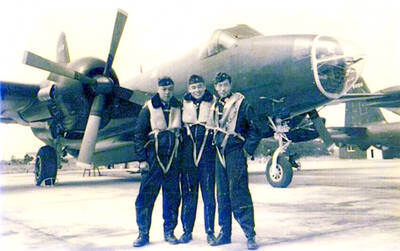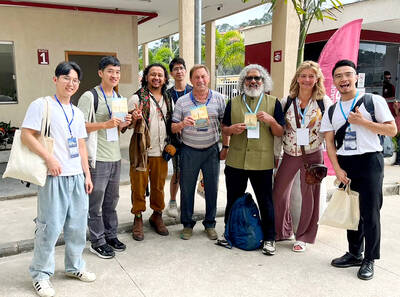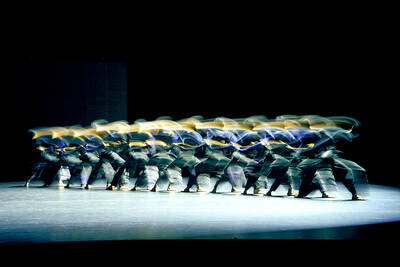I arrived at Siem Reap, after a 12-hour bus journey from Ho Chi Minh City, at night and in a downpour. Torrents of rain lashed the palm trees, and men holding kerosene lanterns with capes over their heads emerged out of the darkness and asked where I was going. It was what I imagined Japan might have been like in the 18th century, and I warmed to it immediately.
The next morning dawned sunny and hot, and a quick tour revealed the town to be small, compact and divided by a languid river. On the one side stood a grid of some six streets containing tourist cafes and bars, with several grand hotels in sprawling gardens not far away. The other bank was characterized by picturesque lanes, the crowing of cocks, and a handful of laid-back, mostly mid-priced hotels.
The vast complex centering on Angkor Wat stands a few kilometers away, while at a slightly greater distance in the opposite direction are the shores of the largest lake in Southeast Asia, Tonle Sap, somewhere well worth visiting.

PHOTO: BRADLEY WINTERTON
Angkor is one of the world’s greatest historical sites, and Siem Reap would be insignificant without it. Angkor Wat, merely the grandest of many temples spread over a wide area, recalls Versailles — large-scale architecture representing power and control towering over placid watery surroundings.
On a typical day Japanese tour groups following their pennant-bearing guides under brilliantly-colored parasols contrast with the somber grey, green and sooty colors of the ancient buildings. But the tourist chatter only briefly interrupts the silent grandeur of the place, and you have merely to deviate slightly from the masses’ single-minded trajectory to be among motionless trees in dappled glades, with some minor temple still largely in a state of nature in view.
Angkor Wat itself was always the biggest and most assiduously restored of the temples. But the entire complex is thought to have been a city of a million inhabitants, with the wooden residences of the people now rotted away and only the ostentatious public buildings remaining.

PHOTO: BRADLEY WINTERTON
Between the two World Wars, Angkor was a prime destination for affluent travelers escaping the European and North American winter. The Europeans would arrive in what’s now Indonesia on a Dutch liner, then tour Southeast Asia with Angkor as the culmination. In those days the whole area was largely untouched, crumbling ruins all but throttled by jungle replete with monkeys, deer and poisonous snakes.
Two such English travelers were the novelist Somerset Maugham and the art critic Geoffrey Gorer. Both wrote books about their trips, with Maugham omitting any mention of the gay encounters with locals that were certainly among his journey’s main motivations. He was there in 1922 to 1923 but didn’t publish his account, The Gentleman in the Parlour, until 1930. He considered Angkor the most wonderful place he’d ever visited, while Gorer, in Bali and Angkor (1936), believed the entire edifice was evidence of a populace enslaved by opium, adding details of his own experiences with mescaline as an appendix.
Both writers homed in on Bayon, the temple with the most impressive concentration of carvings. It’s still wonderful, and your pass is carefully re-examined before entry. (The charge for the whole Angkor complex, incidentally, is US$20 per day). Impassive faces on a huge scale look down on images depicting dancing and everyday life, and the richness feels all the more potent for being concentrated, and so squeezed upwards, within a relatively restricted perimeter.

PHOTO: BRADLEY WINTERTON
But more visitors probably congregate at Ta Prohm where a gigantic tree engages in a passionate embrace with a wall, and the sense of nature entwined with ruins still prevails, as it did for centuries before the modern era. The Hindu temple dedicated to Shiva called Ta Keo is also striking, in this case as a structure that can actually be climbed to its highest point.
There are ancient temples separated from Angkor that offer a different experience. One is Wat Athvea, on the other side of Siem Reap, built by King Suryavarman II as a funeral monument for his parents. Beng Mealea, nearly two hours’ drive from Siem Reap, is also wonderful. It’s approached by a path leading over roofs and down intact alleys. Another lesser-known site is Phnom Bok, built on a sacred mountain with views over the surrounding landscape.
As for Siem Reap, however much you’ve arranged to pay there, prepare to end up paying more. And if you’ve asked to be taken to one restaurant, steel yourself to be taken somewhere totally different where the driver can collect a commission.

PHOTO: BRADLEY WINTERTON
There’s no shortage of luxury hotels. One, La Residence d’Angkor (www.residenceangkor.com), offers 54 luxurious rooms grouped round a shaded swimming pool. The Russians were a growing market, I was told, with Brazil coming along nicely. The hotel will re-open after extensive renovation in August.
I found the boutique wing of the Golden Banana (www.golden-banana.com) excellent value at US$35 to US$55. I could happily have lived in my Cambodian-style villa there, with a bedroom downstairs and sitting room and bathroom above. The leafy ambiance is Balinese, but the price far lower than you’d pay for comparable accommodation in Bali’s Ubud. Nearby is Viroth’s (www.viroth-hotel.com), elegant and modern at around US$75 a night, if slightly lacking in atmosphere.
Anyone wanting to rent an entire luxury villa for a special occasion should try Athakon, standing 3km outside Siem Reap in its own garden and sleeping 10 or so; send an e-mail to sokkimlay@yahoo.com for details.

PHOTO: BRADLEY WINTERTON
Among the better restaurants I ate at were the traditional and up-market Sugar Palm (around US$15 per head, several drinks included) and the French-style bistro Barrio’s, similarly priced, where the creme brulee was outstanding. Excellent coffee and cakes, though at Taiwanese prices, are available at the Blue Pumpkin coffee shop. Don’t be tempted by the Koulen (dinner-plus-theater) Restaurant where several hundred tourists gorge on an indifferent buffet before witnessing a short and unmemorable “cultural display.”
After eating you should go to Zone One, surely one of the most raucous discos in all Asia. The young and middle-aged, some in from the Cambodian countryside specially for the occasion, rave here seven nights a week, many wearing flip-flops and perhaps their only T-shirt, while allegedly upstairs in private rooms literally anything can happen, and apparently often does.
Zone One is on the edge of town, but the rest of Siem Reap’s nightlife can be sampled on foot. Before going further, however, clubbers get primed up at the trendy Laundry Bar, the faded Zanzy Bar or the Temple Club on the so-called Pub Street. Then it’s on to Zone One, the Sak San Palace (where girls for hire sit behind a glass screen with numbers round their necks, Thai-style), or the Martini Bar where couples, many quite young, dance sedately together. There are two gay bars — Linga, by far the most popular, and the newer Blue Chili. There are, astonishingly, no entrance fees at any of these places, Zone One included.

PHOTO: BRADLEY WINTERTON
If culture and the prospect of a crazed night afterwards make for an electric combination, then Siem Reap and Angkor together form a near-ideal combination. Certainly the many millions of tourists who go there every year appear to think so.

PHOTO: BRADLEY WINTERTON

PHOTO: BRADLEY WINTERTON

Most heroes are remembered for the battles they fought. Taiwan’s Black Bat Squadron is remembered for flying into Chinese airspace 838 times between 1953 and 1967, and for the 148 men whose sacrifice bought the intelligence that kept Taiwan secure. Two-thirds of the squadron died carrying out missions most people wouldn’t learn about for another 40 years. The squadron lost 15 aircraft and 148 crew members over those 14 years, making it the deadliest unit in Taiwan’s military history by casualty rate. They flew at night, often at low altitudes, straight into some of the most heavily defended airspace in Asia.

This month the government ordered a one-year block of Xiaohongshu (小紅書) or Rednote, a Chinese social media platform with more than 3 million users in Taiwan. The government pointed to widespread fraud activity on the platform, along with cybersecurity failures. Officials said that they had reached out to the company and asked it to change. However, they received no response. The pro-China parties, the Chinese Nationalist Party (KMT) and Taiwan People’s Party (TPP), immediately swung into action, denouncing the ban as an attack on free speech. This “free speech” claim was then echoed by the People’s Republic of China (PRC),

Many people in Taiwan first learned about universal basic income (UBI) — the idea that the government should provide regular, no-strings-attached payments to each citizen — in 2019. While seeking the Democratic nomination for the 2020 US presidential election, Andrew Yang, a politician of Taiwanese descent, said that, if elected, he’d institute a UBI of US$1,000 per month to “get the economic boot off of people’s throats, allowing them to lift their heads up, breathe, and get excited for the future.” His campaign petered out, but the concept of UBI hasn’t gone away. Throughout the industrialized world, there are fears that

Like much in the world today, theater has experienced major disruptions over the six years since COVID-19. The pandemic, the war in Ukraine and social media have created a new normal of geopolitical and information uncertainty, and the performing arts are not immune to these effects. “Ten years ago people wanted to come to the theater to engage with important issues, but now the Internet allows them to engage with those issues powerfully and immediately,” said Faith Tan, programming director of the Esplanade in Singapore, speaking last week in Japan. “One reaction to unpredictability has been a renewed emphasis on